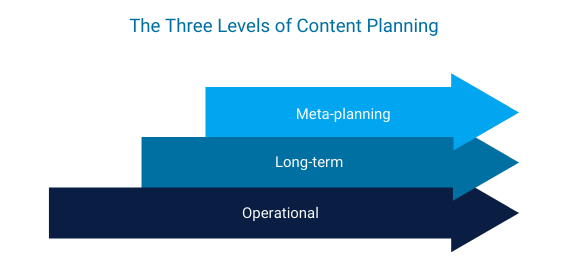From content planning to digital subscriptions
Not so long back, the relationship between subscriptions and editorial went like this. Ask anyone in the editorial department about the subscriptions department, and they would assure you it existed but literally wouldn’t know where it happened to be in the building.
Suggest that subscriptions might play a part in editorial planning, and you would be guaranteed a laugh - only the almighty editor decided that, and they had no idea where the subscriptions department was either.
Subscriptions were something only publishers dealt with.
Fast forward to today’s media world, and it is clear that every editorial action and decision has an immediate and direct impact on the conversion funnel, and with it, the success of the subscriptions drive. Today’s editorial will mostly understand that their output can and will be judged on how successfully it engages with the audience and encourages them to become paying customers.
Understanding that is one thing. Planning for it is another. Many publications still work on a short-term, reactive approach to content planning, as one editor puts it; “We always just realize on December 24th that the next day is Christmas.”
Meta planning is the approach that gets publishers out of that short-termism and onto a path with more control, more direction, and yes, more subscriptions.
The three-step development of content planning
Planning has come a long way in a short time, and we can trace its evolution over three phases:
- Operational planning
- Long-term planning
- Meta-level planning

Phase 1: Operational planning
Traditionally content planning has been seriously short-term.
Reporters pitched their stories, and editors decided on it more or less on the spot. The criteria for those decisions would typically be a non-explicit set of guidelines, personal beliefs, and experiences. The editor’s ‘feeling’ for a story was unquestioned.
That approach was a part of news culture for so long that this focus on short-term planning is reflected in content planning tools of even the most advanced newsrooms like the NY Times.
Phase 2: Looking up - life in the long term
Under pressure from the growth of different new sources, the need to differentiate, capture an audience, and perhaps escape from the day-to-day scramble of short-termism led newsrooms to look up and start mid to long-term planning. That saw a raft of planning and scheduling tools with increasingly sophisticated collaboration features that helped team working.
Phase 3: Meta-level planning
With engagement and conversion now top priorities, newsrooms are adding a strategic and potentially tactical level on top of their operational planning.
Aspects such as audiences, audience needs, or core topics are starting to play a central role in defining what stories to publish.
Why meta-level content planning?
Product managers, audience development managers, and editors are now seeing how direct and immediate the link is between the stories they publish and their success in acquiring and retaining digital subscribers.
They have also acquired a much better (though far from perfect) understanding of what content works and are looking for tools and techniques that can turn those insights into improved products with measurable returns.
This is where Meta Planning comes into play.
The planning process is the bridge between knowledge in the newsroom and the actual production of good content. Correctly done, it ensures that what you know about your content can shape it daily.
Part of this sees the planning process shift from “What’s out there to cover?” to “What should we write about, how, and for whom?”.
This is where a newsroom moves from just planning content to planning the *right* content.
The multiple layers of Meta-level Content Planning
Every content publisher has to find and focus on the relevant criteria for their audience.
Many elements are in play, but certain aspects are emerging as critical in the content planning of the future:
- Audience segments: Newsrooms have started to see their audience not as a homogenous mass but as a collection of audience segments with different levels of importance. These different segments can be targeted with different content and amounts of content to reflect that importance.
- Audience needs: These segments may have very different needs regarding what kind of content is being published on what platforms.
- Topics: Certain topics are of greater interest to an audience segment than others. Newsroom managers need to ensure that the right kind of content is posted at the right frequency.
- Story types: A story can be covered in different ways. Sometimes a short update is necessary, and sometimes you need a long explainer piece. As newsrooms are learning that different types of stories drive subscriptions in different numbers, newsroom managers need to ensure the right mix of story types is being produced. See this extensive internal analysis by the Wall Street Journal.
Who benefits from it?
The short answer is that Meta-level content planning indirectly serves the needs of the entire newsroom by helping it produce the right content.
Looking at the more direct impact, we can see a clear difference in who would benefit how:
- Reporters: Asking reporters to think about Meta-level factors is a big ask. Done right, however, with the aid of a planning tool like Kordiam, it can help give much-needed clarity and focus about the shape of the story they are working on.
- Editors and other newsroom managers: Those who are coordinating the entire newsroom or individual sections are poised to gain the most as more structured planning helps them ensure the right content mix is being pitched and produced.
How do editors use this new planning procedure?
Meta-level planning allows editors and newsroom managers to make the right decisions in a busy newsroom environment.
Daily, editors can get a detailed overview of the type of content needed in the short, medium, and long term. Want a focus on specific audiences or topics? Need more explainer stories instead of short updates? Tagged stories mean a newsroom’s planning tool can quickly provide editors with insight and the opportunity to amend the short- to long-term content production.
Similarly, editors can run historical analyses to see the structures and characteristics of the entire content the newsroom has produced. Weekly, monthly, and annual analysis means Meta-level planning helps newsroom managers better understand what has happened and allows them to relate this to other statistics such as new subscriptions or churn data.
Bluntly put, it has become a choice between moving up to Meta or missing out.

